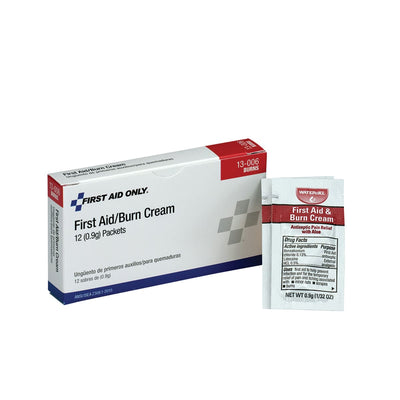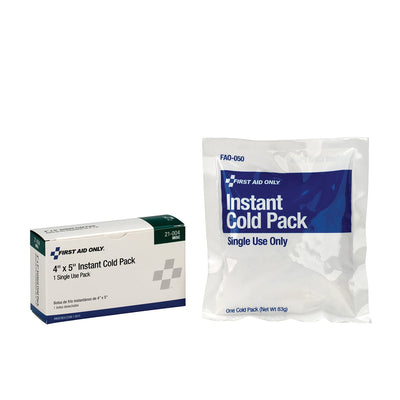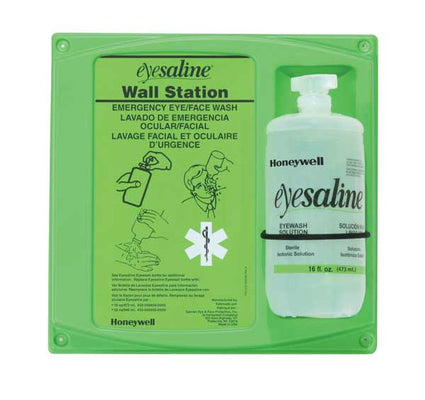Emergency Care For Burns
Here are some key points.
- Burns can result in serious injury or even death.
- Call for emergency medical help if a co-worker is burned.
- Wear the appropriate personal protective equipment to protect yourself from burns.
Burns can be deadly
- Each year in the United States more than two million people are injured and nearly 12,000 people die as a result of burns.
- The largest percentage of burns to adults occur in the workplace.
-
These may result from:
- contact with flames or hot objects such as machinery or pipes
- contact with hot liquids or steam
- splashes from chemicals to the skin or eyes
- electricity
- You can protect yourself from burns by being careful, and by wearing the appropriate personal protective equipment (PPE) if you work with chemicals or other potential hazards.
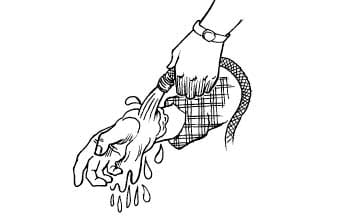
Use large amounts of cool water to cool a burn.
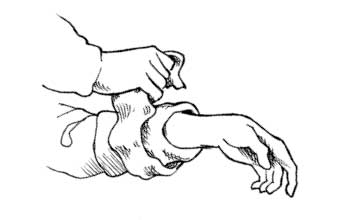
Cover the burn with a loose bandage or clean, dry cloth.
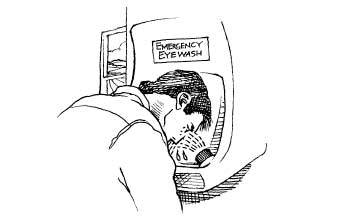
Flush an eye that has been splashed with chemicals for at least 15 minutes.
Not all burns look the same
- Some burns, called first-degree burns, are less serious than others. They usually result in red, dry skin and mild swelling.
- Second-degree burns do more damage to the skin. They are usually quite painful, and result in blisters and swelling.
- Third-degree burns often result in white or charred skin. The burned skin may also be hard and dry. Third-degree burns of any size are extremely serious and require immediate medical attention. These burns destroy nerve endings, so they may not feel painful.
- If you or one of your co-workers is burned at work immediately notify your supervisor and get emergency medical help.
What to do for burns
- Here are some steps to take if a co-worker is seriously burned:
- Call for emergency medical help as soon as possible. Report minor burns to management, too.
- Remove the person from the heat or other source of the burn. Warning: Don’t touch a person burned by electricity until the power has been turned off.
- Use large amounts of cool water to cool the burn, unless it is an electrical burn or a burn due to freezing such as anhydrous ammonia. Don’t use ice or ice water to cool a burn.
- Apply a soaked towel, sheet or other wet cloth to burned areas that can’t be immersed in water.
- Cover the burn with a loose bandage or a clean, dry cloth.
Electrical burns or chemical burns
- Both of these types of burns are very serious. Immediately call the emergency medical services for help.
- Don’t touch a person shocked by electricity until you are certain the power is off. Only turn the power off yourself if you can do so safely. If the person isn’t breathing and you have been trained in CPR, administer CPR until professional help arrives. Then cover the electrical burn with a dry bandage.
- For a chemical splash to the eye, follow these steps:
- Immediately flush the eye with eyewash solution or a gentle stream of cool, running water.
- Continue to do this for at least 15 minutes.
- For chemical burns to the skin:
- Check the chemical label and material safety data sheet (MSDS) for specific instructions.
- Don’t touch the area exposed to the chemical without wearing the appropriate PPE.
- Remove any excess powdered or dry chemicals from the person’s skin. Also remove any contaminated clothing if possible.
- Flush the burned area with a gentle stream of cool, running water for at least 15 minutes.
Emergency Burn Care Do’s and Don’ts
Do
- Act quickly when a co-worker is burned.
- Use cool – not ice cold – water to cool burns.
- Know the location of our emergency showers and eyewash stations.
- Break blisters that result from a burn.
- Apply antiseptic sprays, ointments, grease or butter to a burn. Get professional medical advice.
- Try to remove clothing that is stuck to burned skin.
When you’re ready to work safely, you’re ready to work. See our full line of safety supplies, including respirators, eye and ear protection, coveralls, first aid and more.






